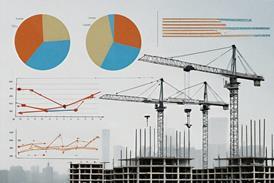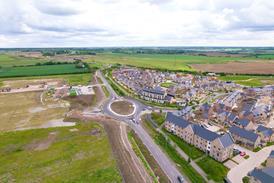What are the main standards covering telecomms earthing? Excluding standards for exchanges and those for domestic IT solutions, you have to consider standards from two sources: the USA and Europe. While there are also the international standards ISO/IEC 11801: 2002 Second edition (Amendment 2) – Generic cabling for customer premises and IEC 61140: 2002 Protection against electric shock – common aspects for installation and equipment, the latter is an electrical standard and does not cover telecomms earthing, other than referring to generic class equipment.
Until recently the USA stood alone in the telecomms standards world, but in the last few years Europe has produced its own standards and is now arguably in front of the USA in some areas.
The USA standards were the first to be published. These are ANSI/J-STD-607-A-2002 Commercial building grounding (earthing) and bonding requirements for telecommunications and the National Electrical Code 2002.
The STD 607 standard was developed jointly between the American National Standards Institute (ANSI) and the American Telecommunications Industry Association (TIA). It covers the planning, design and installation of telecomms grounding and bonding systems within a building, with or without prior knowledge of the telecommunication systems that will subsequently be installed. The standard also provides recommendations for grounding and bonding customer-owned towers and antenna.
In this standard the telecomms earthing is tied into the main building earth bar/connection, which includes the main electrical earthing system, lightning protection, bms, etc.
The National Electrical Code 2002 was produced by the National Fire Prevention Association (NFPA) in the USA. It covers all electrical work and includes information regarding bonding and grounding of all systems as well as those for use in telecomms.
In Europe, our main standards are: BS EN 50310: 2000 Application of equipotential bonding and earthing in buildings with IT equipment and HD 384.5.54 Earthing arrangements and protective conductors.
Although we are talking about earthing standards, it would be remiss not to mention BS EN 50174 Part 2 Section 6.7, which gives information on earthing and bonding telecomms.
Now in the UK we use: BS EN 50310: 2000 (as above); BS 7671: 2001 (IEE Wiring Regulations); BS 7430: 1998 Code of practice for earthing and BS EN 50174 Part 2 IT cabling – installation planning and practices inside buildings.
BS EN 50310: 2000 was developed by CENELEC and covers earthing and bonding of IT equipment in buildings with relation to safety, function and electromagnetic performance. It acknowledges that the level of earthing and bonding required by a building depends upon the degree of complexity and size of the IT installation.
You will notice on figure 1 that the telecomms earthing is tied into the main building earth bar/connection that includes the main electrical earthing system, lightning protection, bms, etc.
BS 7671: 2001 was produced jointly between the IEE and BSI. It covers all electrical work excluding vehicles, ships, lifts, lightning protection and general rf suppression and should be read in conjunction with BS 7430: 1998, the code of practice for earthing, which gives guidance on the methods adopted to earth an electrical system on land-based systems.
Whatever grounding systems are installed, always remember that in most instances they are tied together, usually close to the point of entry into the building and there should only be one main earth connection. The main building grounding system protects against the effects of electrical, lightning and electrostatic hazards, as well as telecommunication hazards.
The primary purpose of earthing, grounding and bonding is to ensure safety from electrical shock or fire. In the UK and Europe earthing is designed to ensure as low a voltage as possible on contactable surfaces, with a maximum of 50 V (special dispensation of 55 V for portable tools is granted to the UK).
By tradition the earth lead was a zero voltage lead and had no current flowing in it, with the exception of short duration faults that are cleared when the fuse or circuit breaker trips. Unfortunately, this is rarely the case as a number of things have changed which prevent this from happening.
The increased use of TN-C-S – which is still more commonly referred to as PME (protective multiple earthing) by electricity companies – means that the earth termination point in a small premises always has a voltage present. This is not true for larger buildings, where a three-phase TNS supply is provided by the REC (figure 2) and the main earth point of the installation is held at very near zero volts by a local earth or CEW (continuous earth wire).
Our next problem arises mainly on electronic and IT equipment where the manufacturer has installed two capacitors, one between the live and earth and the other between the neutral and earth (figure 3), which continuously bleed off a small current (about 0·5 mA) to earth in order to help comply with the EMC Directives. These capacitors are usually fitted to all switchable power supplies and are thus present in most active IT/telecomms equipment. For a standard pc station there are normally three fitted, one for the main computer case, one for the monitor and one for the printer. The IEE covers this in Section 607 of the Wiring Regulations (BS 7671) and in Guidance Note 7: Special locations.
Although the currents involved are small, they soon add up to over 30 mA, which is the start of current range perceived to cause damage to humans. It also causes concern that when the capacitor breaks down it can cause either a dead short from live to earth (for the time it takes for the protective device to trip) or a link between the neutral conductors and earth, placing a higher than normal voltage on the earth system due to the neutral current being shared between the neutral and earth conductors. In this event the protection will not normally trip unless protected by an rcd or from another form of earth leakage device.
Many communications systems designers consider the earth as the natural return route, especially in radio installations. However, there have been many developments in recent years that have lead to a growth in the currents that flow to earth and the associated dangers which follow.
In every standard we have looked at the telecomms earth is always connected to the main building earth, sharing it with the electrical system, the lightning protection system and any other special earthing systems such as the building controls system, etc.
Over the years we have witnessed datacomms installers connecting to an existing main earth bar or moving the connections on the main earth bar with no regards to the dangers that may exist. When you ask them what they are doing, they usually reply: "It's alright mate! This is zero volts and there's no danger here." Wow – ignorance really is bliss!
You can see that even when a system is installed properly there are still many sources of danger faced by installers when working on an existing system and one can see why the Electricity at Work Regulations 1989 do not allow 'live working'. If this law was adhered to, less datacomms operatives would have shocking experiences but, unfortunately, there is a dispensation for telecomms workers.
So what can we expect for the future? We are delighted to announce that the ECA ITEC Committee has worked with National Electrotechnical Training and others in the industry to develop NVQs specifically for the structured cabling industry. Recently, the occupational standards for the NVQs were approved by QCA/SQA and the NVQs are expected to be available next September. Within the NVQ framework, we are pleased to say, is a particular module that covers telecomms earthing.
In the near future clients will be able to see how qualified datacomms operatives are via the new Datacomms ECS cards, which identify Advanced Datacomms Specialists and Datacomms Technicians with gold cards and Datacomms Specialists with blue cards. Datacomms Engineers will have platinum cards. For those members whose operatives do not have their Datacomms ECS cards yet, don't wait too much longer – you may regret it!
The top ten most common datacomms earthing faults
- Don’t know, don’t care attitude
- Failure to follow standards
- Failure to follow vendor’s instructions
- Undersized earth bonding cables
- Did not understand earthing requirements and subsequently failed to provide adequate earthing installation
- Data installers who have tried to undertake the primary earthing and did not understand it fully
- Data installers who have tried to avoid the primary earthing system and installed their own separate system
- Comms racks being earthed only by plug and 13 A socket
- STP cables not being earthed
- No earthing whatsoever
Source
Electrical and Mechanical Contractor
Postscript
Tim Oldershaw and Dave Stefanowicz are with the ECA ITEC Committee. This is an edited version of a paper presented at ERA Technology's Earthing Conference last November.





















No comments yet